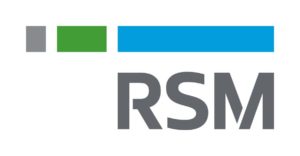Op-Ed: IRA accounts, retirement plans & Hurricane María: How do they collide in my taxes?


Author Rubén M. Rodríguez-Vega is a CPA and special collaborator for the Puerto Rico Society of CPAs.
The Individual Retirement Account is a retirement savings account. However, the funds in an IRA may be used for other purposes in case of an emergency or special need and the Puerto Rico Internal Revenue Code provides for it.
As result of the enormous devastation caused by Hurricane María in September 2017, Gov. Ricardo Rosselló issued an executive order authorizing the Secretary of the Treasury to establish certain tax rules and guidance considered reasonably prudent and necessary to enable the residents of Puerto Rico, while the emergency period persists, to withdraw savings from their retirement plans and IRA accounts at preferential tax rates.
Complying with this guideline, the secretary issued Administrative Determination 17-29, which was subsequently amended for clarification purposes by Administrative Determination 18-02 (hereinafter “the AD”).
In simplified words, what the AD provide is the following:
- To be able to withdraw funds from IRA accounts and qualified Retirement Plans up to the maximum amount of $10,000 (jointly) exempt from the payment of income tax; and
- To be able to withdraw funds from IRA accounts and qualified Retirement Plans up to the maximum amount of $100,000 (jointly) paying a preferential tax rate of 10 percent on the excess of the first $10,000 previously distributed.
- Distributions of IRAs will not be subject to the penalty of 10 percent imposed by the Code for distributions before retirement age (60 years). However, we need to clarify that these distributions could be subject to the penalty for early withdrawal (distribution before maturity of the investment instrument) imposed by each Financial Institution.
It is important to mention that the person requesting the funds might perform several Eligible Distributions during the eligible period (as those terms are defined below) established in the AD, from one or more plans or withdrawal from one or more IRAs, but the total number of eligible distributions should not exceed $100,000 and the total amount exempt from income taxes shall not exceed $10,000.
This sounds like nice music to our ears and it seems to be simple but there are certain requirements and particularities that need to be met for eligibility of the tax benefit granted. The first thing is to have clear definitions of various concepts:
Eligible period – between Sept. 20, 2017 through June 30, 2018. Therefore, we have until June 30, 2018, to request funds and benefit from this special tax treatment.
Eligible individual – refers to an individual as resident of Puerto Rico for the tax years 2017 and 2018. Therefore, the person requesting the funds must be resident of Puerto Rico at the time of requesting the funds and must remain as resident until the end of the taxable year 2018.
Eligible expenses – expenses that an individual has incurred or will incur to compensate loss or damage suffered by the passage of Hurricane María and extraordinary and unexpected expenses to meet basic needs as a result of the disaster caused by this storm. These expenses include, but are not limited to:
- expenses for the repair on damage to a residence or motor vehicle
- payment of medical expenses
- replacement or repair of real estate
- buying food and fuel
- payments for the purchase or repair of power generators
- lodging and food expenses on the basis of total or partial destruction of the main residence during the period of recovery after the hurricane.
It will not be necessary for the person requesting the funds to submit a detail of the expenses incurred or losses suffered. Nor will it be required that expenses related to these distributions have to be incurred within the eligible period. Therefore, you may receive a distribution during the eligible period for eligible expenses to be incurred at a date subsequent to the completion of the eligible period; i.e. you may request the funds on or before June 30, 2018, but incur in eligible expenses at a later date.
In addition, expenses may have been incurred by the eligible individual, spouse, descendants or ascendants. For example, an eligible individual may obtain a distribution to cover part of the cost for repair of the residence of their parents or children.
Eligible distributions – those performed within the eligible period and requested to cover expenses defined as eligible expenses.
It is important to note that the eligible distributions may be from any of the following accounts:
- Deductible IRA account (commonly known as Regular IRA)
- Non-deductible IRA account (known as the Roth IRA)
- Qualified Retirement Plans (as provided under section 1081.01)
With respect to retirement plans, it is the employer’s discretion to adopt all or part of the provisions of the AD. However, the employer who decides to adopt the AD must make sure that the plan provides for distributions prior to the separation of service of the participant (“in service withdrawals”) including those related to qualified emergency (“hardship withdrawals.”) If the plan document does not provide for these type of distributions, it will be necessary to amend the plan.
However, the good news is that the AD provides for an expedited procedure where the participant does not have to wait for the employer to amend the Plan to request the distribution of the funds. The employer must amend the plan document on or before Dec. 31, 2018, but the participant may submit its request for distribution at any time on or before June 30, 2018.
But there is more good news, and this time for employers, which is specifically related to the aforementioned amendment of the plan: it will not be required to request an administrative determination to the Treasury Department for this plan amendment, which facilitates the processing.
We must remember that the Treasury Department’s 10 percent penalty for distributions made before reaching the retirement age does not apply to distribution of retirement plans (as it is the case of the IRA accounts that is exempted on this occasion by virtue of the AD;) retirement plans are governed by the provisions of their respective Plan documents.
Going back to the eligible distributions, the AD does not require that the participants present evidence of expenses incurred or to be incurred; however, in order to request these funds they must present a sworn statement duly notarized. Such affidavit must include a series of information listed in the AD, but as a highlight we should emphasize on the following:
- Certification that the individual has not received eligible distributions from other Retirement Plans or IRA accounts and if other Eligible Distributions have being received, the following information should be included:
- Amount distributed;
- Date of the distribution, and
- Amount withheld, if any.
This certification is particularly important due to the fact that funds to be requested shall not exceed the amount of $100,000 either if withdrawn from IRAs or retirement plans.
- Certification that the individual has not requested to be exempt from the income tax withholding at source on the first $10,000 received. If distributions were received for which the exemption for income tax withholding was requested, the affidavit must include the following:
- Amount of the eligible distribution received or requested that was subject to the exemption of the first $10,000, and
- Date of the distribution
This certification is also considered relevant since the exemption of the $10,000 received applies only to first funds received from any source, whether IRA or retirement plan accounts, or both combined.
Taxpayers who decided to benefit from the provisions of these AD and request funds from their IRA or retirement plan accounts, shall receive an informative return (480) to report amounts received. For distributions of IRA accounts, Form 480.7 will be issued and for retirement plans, Form 480.7C is applicable.
This may seem obvious, but nonetheless we remind you to carefully review the amounts reported in the aforementioned forms to make sure the tax exempt amount is properly informed (first $10,000 received) as well as the excess of such amount, if it was requested and its corresponding 10 percent income tax withholding.
If the 10 percent income tax withholding (for the withdrawals in excess of $10,000) was not made at the time of the distribution of funds, the individual will not be eligible for the special tax provision of the AD.
Furthermore, it is highly recommended that you consult your Certified Public Accountant or financial advisor to properly analyze your economic situation and determine if it is suitable to request distribution of funds from your IRA or retirement plan account.
In addition, we recommend that you read carefully the disclosures of the accounts that are presented as part of the promotional materials, so you understand thoroughly the information provided regarding charges and penalties for early withdrawal of each instrument.













